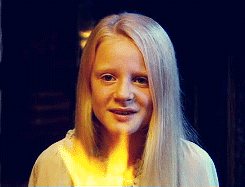So Jen and I are working on a joint paper and presentation for the ICFA (International Conference For The Fantastic In The Arts) coming up this March. We are exploring the similarities between Steven Moffat’s Doctor Who tenure as head writer and the relationship between the Eleventh Doctor and Amy Pond resembling that of Peter Pan and Wendy from Peter Pan. Amy is the ultimate audience avatar; the adult that got to “fly away to Neverland” with her childhood imaginary friend and subject of make-believe, and it is that key element of their relationship that we believe helped contribute to the show’s explosion of popularity globally, especially in America. We talk a lot about fairy tales and fantasy in our paper, specifically because Moffat’s writing style overall seems to be dabble in fairytale elements (Series 5 was explicitly intended to be a “dark fairytale”) where you’d normally expect original sci-fi conventions. Peter Pan is set in the designated genre of fantasy but is so inexplicably related to technology and progress (the assumed realm of sci-fi) due to it relying and have always relied on the advent of electricity (specifically for the portrayal of Tinkerbell). Steven Moffat is doing the opposite with Doctor Who, inverting that relationship. Moffat has been taking a purely sci-fi show and has been bending it into the realm of fairy tales and the mythological or mixes them to the point of being inseparable. His stories are intimate, there are no hanging out at space cantinas and much less emphasis on casual life or the world’s around them. Instead we are given very hyper-focused stories often cloaked with pagan and mythological elements with character driven stories essentially giving sci-fi a fantasy skin.
Moffat started the fantasy bending all the way back in ‘The Girl In The Fireplace’. Reinette is our first prototype Wendy in our paper, in that she, like Amy, meets the Doctor as a child. Reinette, however, like all of us inexplicably grows up and then never gets the chance to go fly away with The Doctor or “Peter” of her childhood, leaving her (like us) standing at the window.
It wasn’t until Series 5 with the introduction of Eleven that the Peter Pan parallelism Moffat introduces in ‘The Girl In The Fireplace’ came into full fruition with Moffat’s choices concerning Eleven’s new puckish, youthful but also extremely petulant personality and the introduction of Amy Pond who becomes the “Wendy” that gets a second chance even after growing up.
If people would like to follow Jen and I’s ruminations, progress with our paper and occasional shouting matches as we get closer and closer to the conference, you can follow our project blog here
Please enter the url to a YouTube video.
Here also for your viewing pleasure this weekend is a clip of the Darling children learning to fly and going off to Neverland from the 1924 silent adaptation of Peter Pan with Betty Bronson as Peter and Mary Brian as Wendy. It continued the pantomime tradition of Peter being played by a woman. Being made in 1924, only 20 years after first performance of Peter, the synergy of stage and the new(ish) rising potential of film and film effects just oozes from this clip through the use of the special effects. Yes, now crude by our standards, but check out that Tinkerbell at 4:08! That’s pretty darn cool isn’t it? Legend of Zelda anyone?

















